Alberta
U.S. tariffs or not, Canada needs to build new oil and gas pipeline space fast
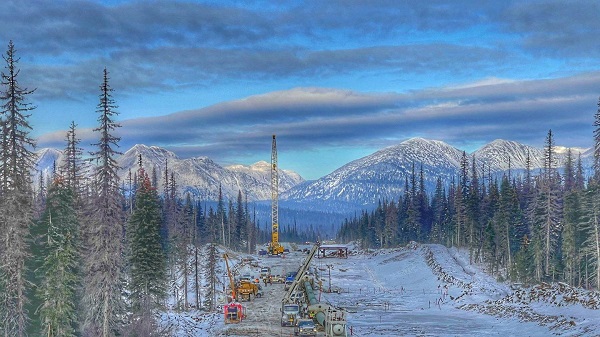
From the Canadian Energy Centre
Expansion work underway takes on greater importance amid trade dispute
Last April, as the frozen landscape began its spring thaw, a 23-kilometre stretch of newly built pipeline started moving natural gas across northwest Alberta.
There was no fanfare when this small extension of TC Energy’s Nova Gas Transmission Limited (NGTL) system went online – adding room for more gas than all the homes in Calgary use every day.
It’s part of the ongoing expansion of the NGTL system, which connects natural gas from British Columbia and Alberta to the vast TC Energy network. In fact, one in every 10 molecules of natural gas moved across North America touches NGTL.
With new uncertainty emerging from Canada’s biggest oil and gas customer – the United States – there is a rallying cry to get new major pipelines built to reach across Canada and to wider markets.
Canada’s Natural Resources Minister Jonathan Wilkinson recently said the country should consider building a new west-east oil pipeline following U.S. President Donald Trump’s threat of tariffs, calling the current lack of cross-country pipelines a “vulnerability,” CBC reported.
“I think we need to reflect on that,” Wilkinson said. “That creates some degree of uncertainty. I think, in that context, we will as a country want to have some conversations about infrastructure that provides greater security for us.”
Many industry experts see the threat to Canada’s economy as a wake-up call for national competitiveness, arguing to keep up the momentum following the long-awaited completion of two massive pipelines across British Columbia over the last 18 months. Both of which took more than a decade to build amidst political turmoil, regulatory hurdles, activist opposition and huge cost overruns.
On May 1, 2024, the Trans Mountain pipeline expansion (TMX) started delivering crude oil to the West Coast, providing a much-needed outlet for Alberta’s growing oil production.
Several months before that, TC Energy finished work on the 670-kilometre Coastal Gaslink pipeline, which provides the first direct path for Canadian natural gas to reach international markets when the LNG Canada export terminal in Kitimat begins operating later this year.
TMX and Coastal GasLink provide enormous benefits for the Canadian economy, but neither are sufficient to meet the long-term growth of oil and gas production in Western Canada.
More oil pipeline capacity needed soon
TMX added 590,000 barrels per day of pipeline capacity, nearly tripling the volume of crude reaching the West Coast where it can be shipped to international markets.
In less than a year, the extra capacity has enabled Canadian oil production to reach all-time highs of more than five million barrels per day.
More oil reaching tidewater has also shrunk the traditional discount on Alberta’s heavy oil, generating an extra $10 billion in revenues, while crude oil exports to Asia have surged from $49 million in 2023 to $3.6 billion in 2024, according to ATB analyst Mark Parsons.
 With oil production continuing to grow, the need for more pipeline space could return as soon as next year, according to analysts and major pipeline operators.
With oil production continuing to grow, the need for more pipeline space could return as soon as next year, according to analysts and major pipeline operators.
Even shortly after TMX began operation, S&P Global analysts Celina Hwang and Kevin Birn warned that “by early 2026, we forecast the need for further export capacity to ensure that the system remains balanced on pipeline economics.”
Pipeline owners are hoping to get ahead of another oil glut, with plans to expand existing systems already underway.
Trans Mountain vice-president Jason Balasch told Reuters the company is looking at projects that could add up to 300,000 barrels per day (bpd) of capacity within the next five years.
Meanwhile, Canada’s biggest oil pipeline company is working with Alberta’s government and other customers to expand its major export pipelines as part of the province’s plan to double crude production in the coming years.
Enbridge expects it can add as much as 300,000 bpd of capacity out of Western Canada by 2028 through optimization of its Mainline system and U.S. market access pipelines.
Enbridge spokesperson Gina Sutherland said the company can add capacity in a number of ways including system optimizations and the use of so-called drag reducing agents, which allow more fluid to flow by reducing turbulence.
LNG and electricity drive strong demand for natural gas
Growing global demand for energy also presents enormous opportunities for Canada’s natural gas industry, which also requires new transportation infrastructure to keep pace with demand at home and abroad.
The first phase of the LNG Canada export terminal is expected to begin shipping 1.8 billion cubic feet of gas per day (Bcf/d) later this year, spurring the first big step in an expected 30 per cent increase in gas production in Western Canada over the next decade.
With additional LNG projects in development and demand increasing, the spiderweb of pipes that gathers Alberta and B.C.’s abundant gas supplies need to continue to grow.
TC Energy CEO Francois Poirier is “very bullish” about the prosect of building a second phase of the recently completed Coastal GasLink pipeline connecting natural gas in northeast B.C. to LNG terminals on the coast at Kitimat.
The company is also continuously expanding NGTL, which transports about 80 per cent of Western Canada’s production, with more than $3 billion in growth projects planned by 2030 to add another 1 Bcf/d of capacity.
Meanwhile Enbridge sees about $7 billion in future growth opportunities on its natural gas system in British Columbia.
In addition to burgeoning LNG exports from Canada, the U.S. and Mexico, TC Energy sees huge potential for gas to continue replacing coal-fired electricity generation, especially as a boom in power-hunger data centres unfolds.
With such strong prospects for North America’s highly integrated energy system, Poirier recently argued in the Wall Street Journal that leaders should be focused on finding common ground for energy in the current trade dispute.
“Our collective strength on energy provides a chance to expand our economies, advance national security and reduce global emissions,“ he wrote in a Feb. 3 OpEd.
“By working together across North America and supporting the free flow of energy throughout the continent, we can achieve energy security, affordability and reliability more effectively than any country could achieve on its own.”
Alberta
How Alberta is moving to speed up oil sands reclamation with mine water treatment

From the Canadian Energy Centre
New standards to build on rules already in place for other mining sectors
In what the former Chief of the Fort McKay First Nation calls “a critical step in the right direction,” the Alberta government is moving to accelerate reclamation of more than 1.3 trillion litres of water stored in oil sands tailings ponds.
On Sept. 5, the province announced it will expedite setting standards that allow for “mine water” to be treated and released into the environment, building on the rules that are already in place for other mining operations across Canada.
“We cannot ignore this challenge, we need to keep working together to find practical and effective solutions that protect Indigenous rights, people and the environment,” said Chief Jim Boucher, a member of Alberta’s Oil Sands Mine Water Steering Committee.
That committee is behind a suite of nine recommendations that Alberta is putting into action to improve mine water management and tailings pond reclamation.
The Mining Association of Canada (MAC) says decades of research give the industry confidence that mine water can be safely treated and released once regulations are in place.
But that will take the federal government moving faster too.
Both the federal and provincial governments play a role in potential regulations for the treatment and release of oil sands mine water.
“Alberta is proposing science-based parameters to ensure the safe return of treated water used in oil sands mining, just as other provincial governments do for their respective mining sectors,” MAC CEO Pierre Gratton said in a statement.
“We are hopeful that this will accelerate the development of federal regulations – which we requested almost 15 years ago – to be similarly advanced.”
Gratton said setting standards for safe mine water release could unlock “significant investments” in oil sands reclamation and water treatment.
What are tailings ponds?
Tailings are a byproduct of mining operations around the world.
Oil sands tailings ponds are engineered basins holding a mix of mine water, sand, silt, clay and residual bitumen generated during the extraction process. There are eight operating oil sands mines with tailings ponds in northern Alberta.
Recycling water held in these basins helps operators reduce the amount of fresh water withdrawn from the Athabasca River.
In 2023, 79 per cent of the water used for oil sands mining was recycled, according to the Alberta Energy Regulator.
What is oil sands mine water?
Oil sands mine water is water that comes into contact with the various stages of oil sands mining operations, including bitumen extraction and processing.
Tailings ponds in the oil sands also hold water from significant amounts of rain and snow collected in the decades since the first mines began operating.
While the oil sands mining sector has reduced the amount of fresh water it uses per barrel of oil produced by nearly one-third since 2013, the total volume of mine water in tailings storage has grown as production has increased.
What’s in oil sands mine water?
The constituents of oil sands mine water requiring treatment for safe release are both typical of water in other industrial processes and unique to the oil sands sector.
MAC says common materials are suspended solids like sand, silt and clay, as well as a range of metals. These can be treated by a wide range of proven technologies already in use in Canada and globally.
Unique to oil sands mine water are organic compounds such as naphthenic acids. According to MAC, operators have demonstrated and continue to invest in processes to treat these to levels safe for environmental release.
How does mine water impact reclamation?
At the end of an oil sands mine’s life, operators must remove all infrastructure and restore the land to features of a self-sustaining boreal forest similar to what was there before.
Addressing the challenge of tailings ponds and the mine water stored in them is critical to the overall success of oil sands mining reclamation.
Why is mine water release important?
MAC says the only way to remove mine water in tailings ponds is to treat it for safe release to the environment.
Strict regulations allow for this process across Canadian copper, nickel, gold, iron ore, and diamond mining operations. But it is prohibited in the oil sands.
The safe release of treated oil sands mine water into the environment can reduce the need to store it, minimize further land disturbance and help reclamation happen faster.
MAC says operators have shown they can treat mine water to safe release levels, using processes that include innovative technologies developed through Canada’s Oil Sands Innovation Alliance.
What is Alberta doing?
Alberta has accepted the Oil Sands Mine Water Steering Committee’s nine recommendations aimed at speeding up solutions for safe mine water release.
The province says the recommendations, developed with input from industry, technology providers, Indigenous communities and scientists, will now be evaluated to determine how they can be put into practice.
Alberta
Premier Smith directs ministers to grow economy and create jobs
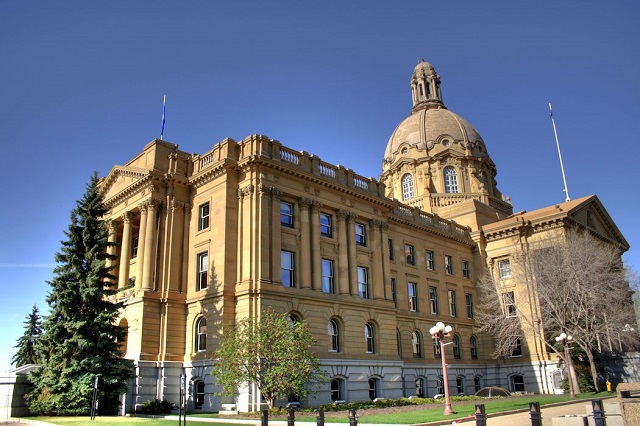
Premier Smith has issued new mandate letters to several ministers. Minister of Jobs, Economy, Trade and Immigration Joseph Schow will push for Alberta to set its own immigration levels and expand youth job programs. Minister of Forestry and Parks Todd Loewen will strengthen wildfire protections and open more recreation opportunities. Minister of Tourism and Sport Andrew Boitchenko will expand year-round tourism and implement the Fairness and Safety in Sport Act to ensure women and girls have the opportunity to compete in biological female-only divisions. Minister of Arts, Culture and Status of Women Tanya Fir will expand Alberta Day, showcase the provincial flag more prominently, and improve supports for survivors of domestic violence.
Alberta’s Minister of Jobs, Economy, Trade and Immigration Joseph Schow, Minister of Forestry and Parks Todd Loewen, Minister of Tourism and Sport Andrew Boitchenko and Minister of Arts, Culture and Status of Women Tanya Fir have been tasked with promoting Alberta’s industries, driving investment, creating jobs and increasing prosperity for people who live in Alberta.
The new mandate letters are focused on delivering the programs and supports that matter to Albertans, Alberta companies, workers and the economy, while maintaining Alberta as the best place to live, work and raise a family.
Through the commitments outlined in each mandate letter, Alberta’s ministers will deliver results, strengthen communities and build a future rooted in prosperity, opportunity and responsible governance.
“A resilient and diversified economy is one of our top priorities and what Albertans expect from their government. We are creating the conditions for workers and industries in Alberta to keep growing – by supporting investments where they are needed and reducing barriers that stifle innovation and expansion.”
Jobs, Economy, Trade and Immigration
The Premier tasks Minister Joseph Schow with:
- Using every legal and policy tool to gain greater provincial authority over immigration, setting sustainable levels that prioritize economic migrants, and ensuring young Albertans have access to jobs. Expanding programs to reduce youth unemployment, developing talent pipelines and helping newcomers integrate successfully.
- Attracting major domestic and international investment by coordinating with partners, reviewing and improving incentive programs, increasing the Investment and Growth Fund and aligning investment attraction agencies with Alberta’s long-term economic goals.
- Defending Alberta’s interests in federal trade negotiations, implementing and managing trade agreements and supporting Alberta businesses to expand into new global markets through trade missions and services.
- Collaborating with ministries and partners to expand airport capacity and connectivity, supporting value-added forestry initiatives, growing Alberta’s cultural industries and securing public and private investment in defense-related and other strategic infrastructure projects.
“Alberta continues to stand out as the best place to do business. Our government’s work is leading to a stronger economy, more jobs and more opportunity for those who call Alberta home. I am honoured to accept this mandate given to me by Premier Smith to continue this growth for Alberta, keeping our province strong and free.”
Forestry and Parks
The Premier tasks Minister Todd Loewen with:
- Securing a federal partnership for wildfire mitigation on federal lands, especially in national parks, and advancing proactive fire management through strategic harvesting, fuel reduction, expanded FireSmart programs, new technology and modern firefighting equipment.
- Finalizing and implementing the new strategy to expand public access to natural spaces responsibly, while continuing to add new campsites, trails and recreation opportunities, and upgrading infrastructure in high-traffic areas like Kananaskis, Canmore and Crowsnest Pass.
- Remaining committed to a common-sense approach to maintain healthy wildlife populations and guide ministry practices related to fish and game management.
- Proposing a value-added tax incentive for forestry products and enabling more public land use opportunities through private and community partnerships.
“The beautiful outdoors of our province feels like home for many Albertans. Our government is continuing its work to make sure that the land we have all grown up loving will stay strong for Albertans today and for future generations”
Tourism and Sport
The Premier tasks Minister Andrew Boitchenko with:
- Maintaining progress on expanding opportunities for sustainable year-round tourism in the Alberta Rockies with all-season resorts.
- Ensuring the full implementation of the Fairness and Safety in Sport Act, using every legal and constitutional tool available to defend Alberta athletes and guarantee a level playing field.
- Respecting taxpayer dollars by creating a new provincial bidding policy to oversee future bids to host international and national sport events and working with Treasury Board and Finance to ensure visitors contribute fairly to taxes and fees.
- Continuing to work with Travel Alberta to unleash Alberta’s potential and reach the ambitious goal of $25 billion in visitor spending.
“Premier Danielle Smith has made my mandate clear; grow Alberta’s visitor economy and ensure our province continues to be the best place to live, work, visit and play. We have already had great success, and I am excited to keep that ball rolling as we work to strengthen Alberta’s tourism and sport sectors. Albertans elected us to get the job done and that’s exactly what I intend to do.”
Arts, Culture and Status of Women
The Premier tasks Minister Tanya Fir with:
- Continuing to work with the Minister of Jobs, Economy, Trade and Immigration to grow Alberta’s cultural industries including music, television, film and other performing arts.
- Maintaining progress on promoting and celebrating Alberta’s unique cultural identity and heritage, including identifying opportunities to more prominently display our provincial flag and motto across the province while significantly growing the size and scope of Alberta Day celebrations.
- Remaining committed to collaborating with First Nations throughout the province that wish to repatriate items identified as belonging to their nations, including the implementation of the new repatriation framework.
- In cooperation with the Minister of Children and Family Services, pushing forward on developing and implementing supports for victims of domestic violence.
“Our government has a clear vision for Alberta’s arts, culture and heritage sectors to ensure they remain central to our economy, identity and communities. Through this mandate, I will continue leading initiatives that celebrate who we are, create more opportunities in cultural industries, collaborate with First Nations partners and support survivors of gender-based violence.”
-
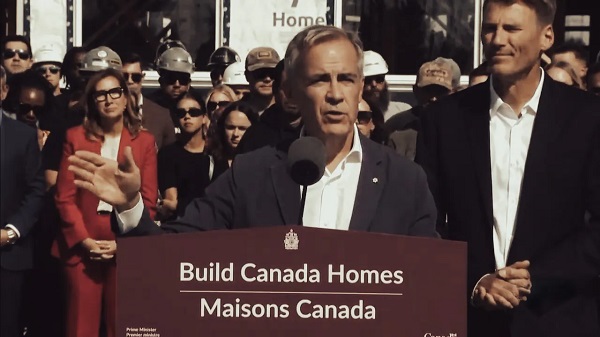
 Business2 days ago
Business2 days agoCarney Admits Deficit Will Top $61.9 Billion, Unveils New Housing Bureaucracy
-

 Alberta2 days ago
Alberta2 days agoAlberta first to add citizenship to licenses
-
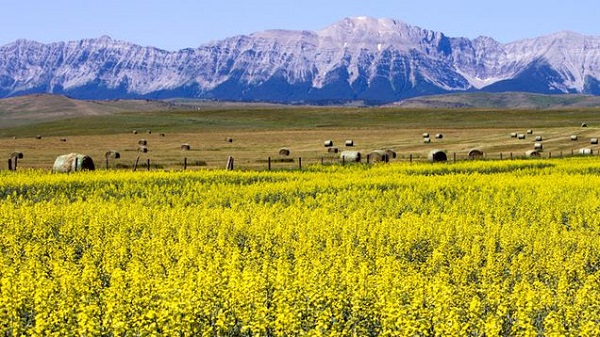
 Alberta1 day ago
Alberta1 day agoBreak the Fences, Keep the Frontier
-

 Business15 hours ago
Business15 hours agoCarney’s ‘major projects’ list no cause for celebration
-

 Business2 days ago
Business2 days agoCarney’s Ethics Test: Opposition MP’s To Challenge Prime Minister’s Financial Ties to China
-

 Business16 hours ago
Business16 hours agoGlobal elites insisting on digital currency to phase out cash
-

 Business14 hours ago
Business14 hours agoRed tape is killing Canadian housing affordability
-
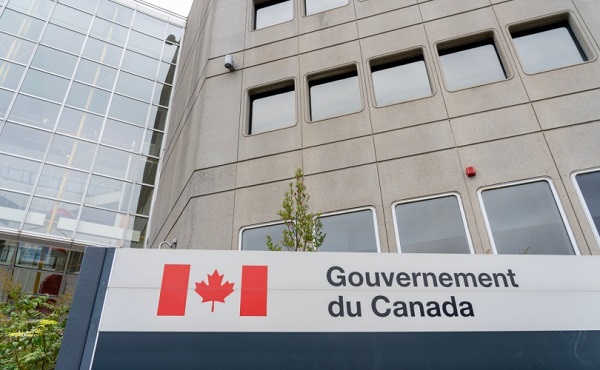
 Business2 days ago
Business2 days agoAttrition doesn’t go far enough, taxpayers need real cuts



